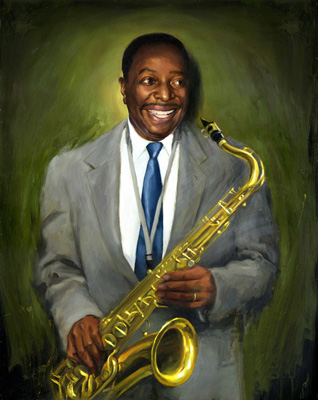|










| |
| The notes are intended to help you understand thelectures and to focus on what
I feel is most important. To succeed in this class you need to read the
notes, listen to the recordings, and come to class. You may also find it
helpful to purchase the optional text. It has more information on some of
the topics we will cover in class and each chapter in the test includes a
very useful discography.

Louis Jordan
Rock and roll is a term
that is very vague. It encompasses a wide range of musical styles
ranging from doo-wop to acid rock, rap, hip-hop, instrumentals, Motown,
soul, etc. The term originated in the early 1950's (although several songs
written in the 40's use the word rock or a variant in their titiles) and the deejay Alan Freed
is sometimes credited with coining the term. Rock music had its roots in
many earlier styles including blues, country, gospel, and jazz. It's closest
precursor was rhythm and blues, the music that was popular among
African-Americans in the early 1950's. This music was also referred to as
race music and it is important to keep in mind that radio stations were
largely segregated at this time. They either played popular music (white
artists), or rhythm and blues (black artists). Some of the early important
rhythm and blues musicians included Louis Jordan, Big Joe Turner, Ruth
Brown, and Joe Morris among many others. The instruments used in this music
included piano, upright bass, drums, and horns (especially the saxaphone).
Rhythm and blues artists recorded for independent labels like Chess, King,
Imperial, and Atlantic because the major labels of the time focused
primarily on white musicians. The recording that is sometimes called the
first rock and roll record was "Rocket 88", recorded by Jackie Brenston in
Memphis in 1951. The song features electric guitar, saxaphones, piano, and
drums. It doesn't yet have the distinctive rock beat that emphasizes the 2nd
and 4th beats of each measure but otherwise it has many characteristics of
rock; a 12 bar verse, instrumental breaks, and a strong beat. For my
money though, the first rock record could be "Good Rockin' Tonight" recorded
in 1947 by Wynonie Harris. It DOES have the backbeat mentioned above. All that
this music needed to succeed was a white artist that could make it
acceptable to white audiences...
|
|
